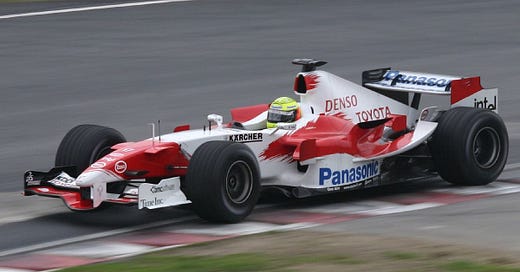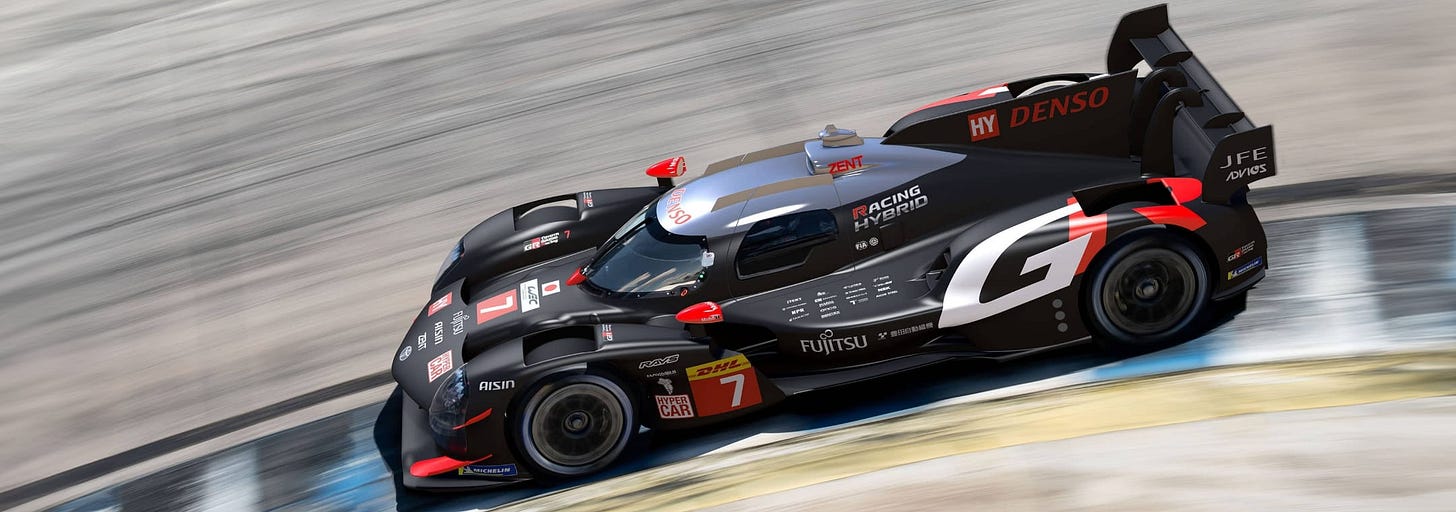Toyota back to F1?
Toyota's latest chess move deserves more attention.
The Japanese giant's technical partnership with Haas F1 might seem like a modest venture into familiar waters. However, beneath the surface lies a carefully orchestrated strategy that speaks volumes about Toyota's true ambitions.
The revelation from Masaya Kaji, Toyota Gazoo Racing's global motorsport director that the company is "studying technologies for 2026 and even current technologies" reads like a corporate press release. But for those versed in Toyota's methodical approach – the same philosophy that transformed it from a textile machinery company into the world's largest automaker – these words carry the weight of inevitability and a sense of reassurance about the company's return to F1.
Consider the timing. Toyota's last Formula 1 endeavor, which ended in 2009, was a lesson in how not to approach the sport. Despite having one of the largest budgets on the grid and a state-of-the-art facility in Cologne, the team never managed to secure a single victory. In many ways, it was the antithesis of the vaunted "Toyota Way" – a philosophy of continuous improvement and respect for people- defining the company's success in every other venture. However, Toyota's approach is markedly different this time, giving hope for a successful future in F1.
This time, Toyota's approach is markedly different. The partnership with Haas serves multiple purposes: it provides a low-risk entry point, offers valuable data-gathering opportunities, and, most importantly, allows Toyota to understand the modern F1 landscape without the pressure of full competition. The company is also gaining practical experience by collaborating on Haas's first Testing of Previous Cars (TPC) development program and constructing a new F1 simulator at the team's Banbury base.
However, the most telling is Toyota's broader motorsport context. The company's dominant presence in the World Endurance Championship, which has claimed five consecutive Le Mans victories, demonstrates its ability to master complex hybrid powertrains – technology that aligns perfectly with F1's current and future regulations. The success of this program stands in stark contrast to its previous F1 effort and suggests Toyota has learned how to translate its corporate strengths into motorsport success.
Kaji's careful acknowledgment that "what happens after 2030 is still uncertain" should be read not as a hesitation but as typical Toyota conservatism. The company is already positioning pieces for a potential return, including placing its WEC driver, Ryo Hirakawa, at Alpine as a reserve driver for 2025. This driver development strategy mirrors Toyota's successful approach in other racing categories, where it methodically nurtures talent for future opportunities.
The timing of a full return—likely post-2030—is particularly strategic. This period will coincide with F1's next major technical revolution, potentially allowing Toyota to enter on a more equal footing with established teams. It's worth noting that the current cost cap era and the sport's push toward sustainability align perfectly with Toyota's corporate philosophy and capabilities.
The partnership with Haas is not an end in itself; it is Toyota's equivalent of sending out scouts before a major campaign. The American team's infrastructure and personnel provide Toyota with invaluable insights into F1's current operational requirements, while their technical collaboration allows Toyota to evaluate the sport's technological demands firsthand.
"We need to focus on what we should be doing right now," Kaji says in a Toyota-like tone. This statement encapsulates the company's approach to every significant endeavor: methodical, patient, and absolutely determined.
This measured approach might seem overly cautious for those who remember Toyota's previous F1 effort. However, in the contemporary F1 landscape, where success is increasingly built on technical partnerships and careful resource allocation, Toyota's strategy appears perfectly calibrated. The company that wrote the book on lean manufacturing and continuous improvement applies those same principles to its F1 return strategy.
When Toyota finally returns to Formula 1, it won't be the same organization that left in 2009. Instead, it will be a company that has learned from its past, mastered hybrid technology through its WEC program, and thoroughly understood the modern F1 landscape through its Haas partnership. In typical Toyota fashion, it is playing the long game—and this time, it is playing to win.









